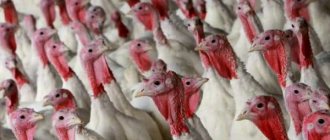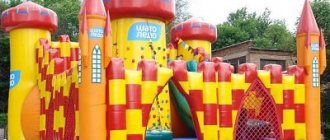- Breeding crayfish as a business at home
- Preparing conditions for breeding crayfish at home
- Methods for breeding crayfish at home
- Types of reservoirs for breeding crayfish
- Aquarium for breeding crayfish
- Having several containers: why are they needed at home?
- Artificial pond for breeding crayfish
- Natural pond for growing crayfish
- Growing crayfish in artificial reservoirs and ponds
- Growing young crayfish in an aquarium
- Incubation apparatus (IRIK)
Business Features
The simplest way to organize a business is considered to be breeding crayfish in a pond: to set up a farm, an entrepreneur just needs to rent or purchase a plot of land with a natural reservoir.
The pond basin is cleared of debris, populated with young animals, and after 5–6 years a self-reproducing population is obtained. Of course, one cannot expect any significant income in this case: the simplified method completely excludes the possibility of controlling the parameters that are most important for the growth of the herd, which include the chemical composition and temperature of the water, feeding ration and stocking density. Therefore, experienced farmers prefer intensive crayfish breeding technologies, which involve the construction of artificial reservoirs with a partially or fully controlled environment. The advantages of this method are obvious:
- An entrepreneur can receive his first profit in 12–18 months;
- Individuals grow much faster, and within a year they reach a weight of 100–150 g;
- When placing aquariums or pools in heated rooms, you can buy heat-loving crayfish species that are highly productive for breeding at home;
- Thanks to control over reproduction and incubation, the survival rate of young animals increases to 85–90%.
The business of growing crayfish is characterized by certain advantages and disadvantages: in order to draw a conclusion about the feasibility of implementing this idea, the entrepreneur must consider them in their entirety, taking into account, first of all, factors that can turn into an insurmountable obstacle for him. When listing the positive aspects, it is necessary to mention that:
- There are several methods for breeding crayfish at home for sale, and some of them are quite loyal to the amount of investment;
- In the process of work, the entrepreneur’s expenses are limited to paying for utilities and purchasing feed at the rate of 0.5 kg per individual per year;
- Caring for crayfish requires virtually no time or physical effort;
- An entrepreneur need not be afraid of competition, since in Russia few farmers are involved in the implementation of the business idea of crayfish breeding;
- Demand for products remains high regardless of the season.
The main disadvantage of this type of activity is considered to be the slow growth of crayfish: representatives of common river species reach marketable sizes within several years. Besides:
- Setting up a crayfish breeding farm using intensive technologies requires significant investments;
- In open reservoirs, at water temperatures below 17°C, crustaceans stop growing and hibernate, so the business is seasonal;
- Regardless of the method of cultivation and the type of crayfish, a return on investment should not be expected earlier than in 3-4 years.
Growing young crayfish in an aquarium
If you choose an aquarium, use a container with a volume of at least 250 liters. It must be equipped with an aeration and cleaning system, a water filter, an oxygen supply device and a heater. Stones and soil are poured onto the bottom so that the crayfish have the opportunity to hide. Thermometers help control water temperature. In too cold an environment, crayfish stop reproducing. Oxygen levels are monitored using oximeters, salt content is monitored by salinity meters.
The advantage of using an aquarium is the ability to control the volume of production. For 1 sq.m. accommodates up to 350 individuals. Pay attention to the material from which the container is made. Metal products are not suitable for crayfish. It is recommended to use plastic or glass containers.
Note! With the aquarium method of cultivation, crayfish grow much faster than in natural conditions (due to the absence of hibernation in winter).
Species for breeding
An entrepreneur who wants to buy live crayfish for breeding needs to take into account such factors as the growth rate and marketable size of individuals, consumer demand and climatic features of the region - the domestic buyer perceives some quite edible crustaceans exclusively as decoration for the aquarium, and keeping heat-loving species in the conditions of the Middle Zone only possible in closed heated tanks. In general, the following are suitable for growing using intensive methods:
- Broad-clawed crayfish. It is distinguished by a fleshy body up to 20 cm long and large claws. It prefers reservoirs with a rocky bottom, heated to a temperature of 16–22°C, and therefore feels good in artificial pools. Currently, this species is endangered: you can buy crayfish for breeding only in nurseries in the Leningrad region, the Baltic states or Belarus;
- Narrow-fingered crayfish. The most common species in Russia, characterized by high fertility: every year the female lays at least 300 eggs. The body length of a male at the age of five reaches 16–18 cm and weighs 120–150 g. Crayfish prefer sandy and clayey soils suitable for building burrows, which helps them adapt to the conditions of open artificial ponds;
- Blue Cuban crayfish. It has a calm, peaceful character, as a result of which it rarely attacks relatives and fish. With good nutrition, this species grows to 8–12 cm in less than a year. It prefers moderately warm waters with a temperature of 23–25°C, so it takes root well in aquariums and pools, where each pair requires about 20 liters of water. To buy blue crayfish for breeding, you need to go to a large pet store;
- Marble cancer. It lives in well-heated reservoirs with a temperature of 20–28°C, where it grows up to 15 cm in two to three years. This species has no sexual division - each crayfish can simultaneously lay and fertilize up to 300 eggs. It calmly tolerates a planting density of up to 20 individuals per 100 liters of water, as it has a peaceful character. You can buy crayfish fry and adults for breeding in online stores or from private breeders;
- Australian red claw crayfish. A heat-loving species that prefers water bodies with a temperature of 21–28°C. It is distinguished by its fleshiness up to 30% of body weight, fertility and growth rate - within a year, young animals reach a weight of 120–150 g with a body length of 12–15 cm. Thanks to their calm nature, they feel good at a stocking density of up to 25 pcs/m². You can buy Australian crayfish for breeding in nurseries in Astrakhan and the Krasnodar Territory.
Breeding methods
Popular methods for keeping crustaceans can be divided into two groups: the first involves the creation of identical natural conditions for breeding crayfish, while the second focuses exclusively on achieving maximum productivity through the formation of an artificial environment with optimal parameters for the development of the population.
Open ponds
Breeding crayfish in a pond is characterized by high labor intensity at the initial stage: it is necessary to dig out several reservoirs with flat walls on the site and equip them with water circulation systems. The area of each can be 0.01–0.1 hectares with a depth of up to two meters. The bottom should be lined with clay, covered with sheets of polypropylene or plastic film, and then a layer of sand and stones should be poured on top, under which the crayfish can build their shelters.
In the future, the entrepreneur’s tasks are reduced to periodic monitoring of water quality, timely aeration and algae removal. It is also recommended to regularly feed pets, since with high planting densities, the volume of natural food supply may be insufficient. When listing other requirements for artificial ponds, it is necessary to mention that:
- In order to avoid the death of livestock, reservoirs should under no circumstances completely freeze, so in cold climates it is advisable to deepen them to 3.5–4 m;
- To prevent flowering and growth of microalgae, up to 30% of the total water volume must be replaced every two weeks;
- Drainage ditches should be dug along the perimeter of the ponds, as well as strengthening the shoreline and creating shade by planting grass and trees.
Advantages of the method:
- The cost of maintaining the reservoir is minimal;
- The water in the ponds is partially aerated and purified through natural processes;
- The development of a natural food supply allows you to save on the maintenance of crayfish.
Flaws:
- In open water, crayfish grow quite slowly;
- Acceptable planting density is no more than 5–6 pcs/m²;
- It is impossible to control the temperature and chemical composition of the water;
- To fill the ponds you need a constant source of water supply;
- It is necessary to think over ways to drain ponds - you cannot simply pour hundreds of tons of water into the garden or yard;
- It is difficult to remove young animals after breeding broodstock;
- In winter, crayfish do not gain weight.
Aquariums
You can start breeding crayfish in an aquarium not only in the village, but also in urban conditions - just choose a room in which the temperature does not drop below 19–21°C.
Here, several wide aquariums with a capacity of about 250 liters each are installed, filled with soil and plants, and then equipped with microclimate and water quality control systems. As a business, breeding crayfish for sale in an aquarium involves large-scale investments - the cost of a tank equipped with everything necessary is comparable to the cost of equipping a pond with an area of 90–100 m². Therefore, this method is used mainly for keeping ornamental species, or for raising fry before planting in open ponds.
Advantages of the method:
- Availability of an automated control system;
- Ability to maintain any given temperature;
- Thanks to the heating of water, crayfish do not go to winter;
- The permissible planting density is up to 30 pcs/m².
Flaws:
- High cost of equipment per unit of production;
- Aquariums need to be cleaned regularly, water and plants changed.
RAS installations
Special equipment for breeding crayfish is more cost-effective and practical than ponds: for example, under natural conditions, individuals reach marketable weight in 3–4 years, while in closed water supply installations this period is halved. Moreover, the ability to regulate the parameters of the aquatic environment in a RAS makes it possible to breed Australian crayfish and other productive species that grow to the required size in just 12–18 months.
Commercially available installations are equipped with equipment that makes it possible to purify water from impurities and waste residues, subject it to disinfection, heat it and saturate it with oxygen. They are placed in any insulated rooms where the temperature does not drop below 10°C: in a home farm, basements or sheds can be used as such.
Advantages of the method:
- Water consumption is limited to the initial filling of the crayfish tanks and minor level adjustments after evaporation;
- The growth rate of pets does not depend on the season and outside temperature;
- The operation of the installation is fully automated;
- The vital activity of the herd is perfectly controlled - females can be removed for spawning, fry can be sorted and crayfish can be kept separately for sale;
- The planting density of adults is up to 25 pcs/m², fry - up to 250 pcs/m².
Flaws:
- High cost of equipment;
- The air humidity in the room increases significantly;
- The operation of the installation is accompanied by the consumption of electricity.
Farm in the basement
The advantages of intensive crayfish breeding technologies fully compensate for the costs associated with setting up a farm: the productivity of a RAS installation with a capacity of 2 m³ is equivalent to the productivity of an open pond with an area of 80 m². In a small insulated basement 5x10 m, you can place five such installations and by breeding Australian red-clawed crayfish, you can annually obtain at least 120–130 kg of products. In the process of preparing the premises, the following must be taken into account:
- The basement must be dry, free from fungus and mold, with concrete floors and walls. When pests are detected, it is necessary to use sulfur bombs and aerosol insecticides. It should be noted that crayfish can be introduced into pools only 12–14 days after treatment;
- For active life, crayfish practically do not need light. In the basement it is enough to install several lamps at the rate of 5 W/m² and organize the duration of daylight within 10–11 hours;
- The room must be equipped with an exhaust ventilation system, since the evaporation of water from the pools increases the humidity level.
Crayfish farming as a business: expenses and income, equipment and other nuances
What are the benefits of crayfish farming?
Crayfish meat has a unique delicate taste. The cost of such a product is quite high (from 500 rubles per kilogram and more), but this factor does not reduce demand at all. In the Russian Federation, crayfish farming is not organized on a large scale, which is why competition in this business is low. In 2014, the Law “On Aquaculture and Fish Farming”
(Federal Law No. 148 of 07/02/2013), after which the fishery for raising these animals began to develop more actively..
There are good prospects for small and medium-sized businesses in this area: exports of crustaceans in 2020 and 2020 increased by 62% and 59%, respectively, compared to the previous year (statistics from the International Trade Center and Rosbusinessconsulting).
Accordingly, we can highlight the main advantages of fishing:
- significant level of demand;
- high price of products;
- low competition:
- good prospects in the field of sales market, incl. sales for export.
Best species for breeding
For sale, it is better to breed the following breeds of crayfish:
- Broad-fingered or noble
. Its advantage is a large yield of meat. This crayfish has powerful legs, abdomen and neck, which is why the volume of finished products can reach 30% of the total weight. The disadvantage is slow growth. It is ready for sale only in the 3-4th year, at which point the weight of one individual approaches 40-50 g (in the second year of development it reaches small sizes: about 4 cm). - Long-fingered or narrow-fingered
. It is highly fertile. One female is capable of bearing up to 450 eggs. Under natural conditions, a shallow reservoir (up to one and a half meters) measuring 1 hectare can accommodate about 2000 individuals, whose weight is approximately 49 g. - The Australian Red Claw
is easy to breed because... It grows quickly and is unpretentious to nutrition. Already by the seventh month of development, it weighs about 90 g, and in a year and a half under artificial conditions it reaches a weight of 200 g. In addition, this species contains a lot of meat - up to 36%. - Kuban
(belongs to the long-toed species). This breed can be preferred due to its rapid growth and ability to reproduce early (most females are ready to breed after reaching 2 years, while other relatives reach maturity at 3-4 years). An adult weighs 50-60 g. - Marble
is a decorative breed. Not intended for large-scale cultivation due to the rarity of the species and predatory habits. Individuals have no sexual differences, their length is 13-15 cm. They are bred in aquariums.
Breeding conditions
The main methods of breeding include growing in an aquarium, an artificial reservoir or a natural pond. The success of the enterprise depends on the chosen method.
How to breed in an aquarium
The first option assumes the presence of a room that can accommodate at least 10 industrial aquariums with a volume of 250 liters (at the initial stage). The tank is usually no higher than one meter and is made of durable plastic. The bottom is wide, which makes it easy to care for and clean your pets.
The advantages of this method include:
- the ability to control the population;
- offspring grow faster due to regulation of water temperature;
- acceleration of growth due to the absence of wintering;
- Due to the small size of the containers, less feed is required.
Important:
Growing crayfish in aquariums takes less time than in ponds.
Is an artificial pond beneficial or not?
The second method requires less investment. To organize fishing, you will need a plot outside the city measuring from 60 to 80 m², on which a pond will be dug. The depth of the artificial reservoir should be 2-3 m. The bottom is lined with driftwood and stones so that the pets can build a shelter for themselves.
To raise young animals, you will need to make several pools filled with concrete (small in size). The water in them should be changed a couple of times a month; in winter, animals are caught or the tanks are insulated. Adults cannot be kept with small ones, because the latter run the risk of being eaten.
Attention:
Crustaceans do not tolerate high temperatures well, so it is better to build a pond in the shade. And under a layer of ice they can simply suffocate.
In a natural pond
The lowest cost breeding method. The main expense item is the purchase of livestock
. In this case, a number of issues need to be resolved:
- Find a body of water with clean water and a rocky bottom.
- Develop ways to protect against poachers. As an option, nets with bells on the surface of the pond are suitable.
- You can also organize security.
This method has its drawbacks: it will not be possible to control the population, and some of the crayfish (about 30%) will simply die. Animals will grow much slower than those kept in artificial conditions.
What to feed crayfish for breeding
Crayfish eat everything, but the speed and efficiency of growth, as well as survival, depend on the quality of food. Specialized feeds are usually expensive, so you can create your own diet.
You can calculate how much food you need using this principle: the weight of one individual accounts for 2% of food
.
If the female has caviar, the volume should be doubled. On average, one crayfish will need 500-600 g of food per year. 70% of the composition should be plant food (aquatic plants, for example, sedge, cattails), 30% should be animal protein (meat, eggs, worms, snails, gammarus, daphnia, fish remains).
Leftover food, dried leaves and tea are suitable additions. Be sure to ensure there is enough calcium in your diet. It is good to supplement it with vitamins.
In percentage terms, food should consist of: 43% protein, 8% fat and 4% fiber.
Legal subtleties
Growing crayfish can be organized in the form of a personal subsidiary plot, the surplus from which the farmer has the right to sell. At the same time, sales will be possible only to wholesalers in markets (and, therefore, the sale price will be two times lower than the market price), because more serious buyers (shops, restaurants) will require a declaration for the products.
To submit a declaration, you will have to register your business as an individual entrepreneur or a farm and pay taxes.
Note:
if the tax inspectorate establishes that the breeding and sale of crayfish occurs on a regular basis without registering the activity, this may result in a fine (according to Article 14.1 of the Administrative Code).
Agricultural activities, which include the cultivation of crustaceans, are subject to a 6% income tax.
Expenses
Maximum costs will be required for breeding animals in artificial reservoirs. Estimated costs:
- Digging pools (100 rubles/1m³) – 100,000 rubles.
- Polypropylene for bottom lining (6400/1sheet) – RUB 1,422,000.
- Well 10 m – 230,000 rub.
- Livestock and feed – 30,000 rubles.
- Weiss device – 45,000 rubles.
- Aerator – 20,000 rub.
- Filter – 266,000 rub.
- Measuring instruments – 20,000 rubles.
- Feeders, crustaceans – 30,000 rubles.
Total: RUB 2,163,000
Earnings
On average, in an artificial reservoir measuring 1000 m2, the production yield in one year will be 3000 kg. The approximate wholesale price of individuals weighing 30-40g is from 600 to 700 rubles per 1 kg.
Accordingly, with a favorable outcome, the average annual income can be 2,100,000 rubles. It is worth considering that, depending on the type of crayfish chosen, it will take different times to raise individuals ready for sale.
In addition, ongoing, contingency and implementation costs need to be taken into account. But if the business is organized correctly, the project will fully pay for itself in a few years and begin to make a profit.
More interesting articles on the channel:
What kind of business does Tyson have? One day of working as a Yandex Food courier Earning money by reporting facts of corruption
Source: https://zen.yandex.ru/media/moneyjust/razvedenie-rakov-kak-biznes-rashody-i-dohody-oborudovanie-i-prochie-niuansy-5d65eb6e95aa9f00ad3dc137
Farm equipment
A farmer planning to buy equipment for breeding crayfish should know that fish tanks with a capacity of 2–3 m³ with high walls are not suitable for these purposes: their filling is accompanied by excessive water consumption, and operation is inconvenient due to the great depth. Therefore, for growing crayfish, special RAS are used, which are a frame with six polypropylene pools installed on it in three tiers. In this case, five containers with dimensions of 2000x830x250 are used for keeping the herd, and the sixth contains:
- Circulation pump;
- Biological filter;
- Ultraviolet sterilizer lamp;
- Heating elements;
- Compressor for aeration.
An entrepreneur who has at his disposal five such three-tier RAS installations can organize the work of the farm as follows:
- One pool is designed to support a broodstock of 30 animals (20 females and 10 males) with a stocking density of 18–20 pcs./m²;
- Four tanks are used for seeding females for the incubation period and subsequent rearing of fry at a stocking density of 200–250 pcs./m²;
- Four installations with five tanks each are used to maintain a commercial herd of 830 animals with a stocking density of 25 pcs./m².
Farm arrangement
| Name | price, rub. | Qty | Amount, rub. |
| Three-tier RAS | 116000 | 5 | 580000 |
| Oximeter | 12800 | 1 | 12800 |
| Universal measuring device | 1400 | 1 | 1400 |
| Shelters for fry | 2,9 | 900 | 2610 |
| Shelters for young animals | 7,7 | 900 | 6930 |
| Shelters for broodstock | 12,5 | 50 | 625 |
| Feeders | 150 | 50 | 7500 |
| Lamp | 1200 | 5 | 6000 |
| Exhaust fan | 3200 | 1 | 3200 |
| electronic scales | 2000 | 1 | 2000 |
| Total: | 623065 | ||
Considering the functional purpose of the equipment, it should be mentioned that:
- An oximeter is used to measure the degree of oxygen saturation of water;
- The universal measuring device is a conductometer, salinity meter and thermometer combined in one housing;
- Shelters for adult crayfish and fry can be made from propylene pipes, cut into pieces 15–20 cm long;
- Electronic scales are used to weigh feed and control the weight of livestock.
Catching crayfish
In order for the crayfish breeding business to bring a stable income, it is necessary to populate the individuals in containers in early spring. Females begin to brood eggs around mid-summer. After some time, the young begin to hatch. Juveniles should be kept in a separate container until they change their shells a second time.
The crustaceans are then caught and moved to other tanks. It is very important that the new body of water is warm, otherwise the individuals may freeze and die. As a rule, one-year-old crustaceans are caught and transplanted into a special container to increase their mass.
The individual reaches the required size approximately 2-3 years after birth. The average weight of an adult crayfish is 500 grams. Moreover, it can reach 10-15 cm in length. This is exactly the kind of commercial product that can be sold within a business.
How to remove crayfish correctly
It is very important to carry out all catching actions correctly. To do this, you can use special fishing rods or nets. Catching is carried out until the end of autumn, but many novice businessmen catch crustaceans at the end of summer. During this period, the most favorable conditions for catching are created due to warm nights.
The easiest way to catch crayfish is by draining the water. However, this can only be done if there are no young animals in the tank - such actions can lead to their death.
Breeding conditions and technology
Studying the species characteristics of crustaceans, one can notice that breeding Australian crayfish at home seems to be more profitable: firstly, they grow much faster than the well-known narrow-toed crayfish, and secondly, their cost on the market is three times higher than the price of crayfish. The step-by-step technology for growing the red claw species is as follows:
- Purchased fry or adults are planted in RAS tanks;
- Crayfish are raised to reproductive age;
- Females with eggs are placed in free pools;
- After a month, the fry are left in incubators, and the females are returned to the herd;
- After two months, the grown young animals are distributed among the tanks.
After a year, the crayfish reach a weight of 130–150 g. Some of them are selected for the tribe, and the rest are sold wholesale or retail.
To create conditions comfortable for crayfish, it is necessary to adhere to the recommended values of the most important parameters of the aquatic environment at all stages:
Chemical composition of water
| Index | Meaning | Index | Meaning |
| Oxygen saturation | 6–8 mg/l | Nitrate concentration | 0.02 mg/l |
| Acidity pH | 6,5–8,5 | Phosphate concentration | 0.2–0.5 mg/l |
| Alkalinity | 1.1–1.3 mg/l | Potassium ions | 35–70 mg/l |
| Rigidity | 8–15 mg/l | Magnesium ions | 10–21 mg/l |
| Nitrite concentration | 0.01 mg/l | Temperature | 21–28°С |
Purchasing young stock
When choosing where to buy crayfish for breeding, novice entrepreneurs often go to the supermarket or the nearest market, or collect fishing gear and try to catch specimens for the breeding stock in the nearest body of water. Meanwhile, these methods can hardly be considered effective:
- Crayfish caught in the wild grow very slowly;
- The natural environment is not sterile, as a result of which there is a danger of catching infected individuals;
- When delivering to retail outlets, carriers are not bothered by creating ideal conditions for crayfish, which leads to drying out of the gills and oxygen starvation;
- Stores most often receive rejected specimens that are not suitable for breeding.
Therefore, when searching for suitable suppliers, it is better to contact private breeders and specialized nurseries: here it is advisable not only to make sure that crayfish do not have diseases, but also to get advice regarding their breeding.
You can buy Australian crayfish and representatives of other heat-loving species for breeding at a price of 120 rubles per adult, while the cost of an ordinary narrow-clawed crayfish is 400–500 rubles per kilogram. In the process of forming a herd, you should adhere to a 2:1 ratio - in other words, the number of females should be twice the number of males.
Relevance of the crayfish business
Anyone who has at least once enjoyed cooked crayfish meat will say that this meat is truly tender and juicy and will be an excellent addition to the holiday table.
Crayfish are also considered delicacies; they have great nutritional value and are rich in healthy protein. Although the prices for them are very high (almost at the level of sturgeon), there is always a demand for them, especially in the off-season (up to 800-900 rubles), but during the “crawfish season”, which is usually considered to be the time from the end of August to November, crustaceans can be bought cheaper (from 300 to 500 rubles).
The idea for growing crayfish is very new and unexplored, so, having gained the necessary experience in breeding crustaceans, you can become a real professional in your field and receive an annual profit that you can invest in the further development of your business, because there are no limits to perfection in this business, and A relatively small initial capital can be a boost to your career as a businessman.
This business is poorly developed in the CIS countries, so your business has a chance to gain the attention of gourmets, avoiding fierce competition. You can grow crustaceans for yourself and your family, or on a large scale for sale.
Feeding
When using intensive technologies, there is usually no natural food supply in the pools, and therefore, in a business plan for crayfish breeding, it is necessary to provide for the costs associated with the purchase of feed. To formulate the diet of animals in an artificial environment, use:
- Crushed corn, wheat, barley;
- Minced fish and meat, bone meal;
- Boiled mashed potatoes or carrots;
- Steamed hay;
- Oak or beech leaves as a natural antiseptic;
- Larvae, insects, worms.
However, with a large population, it is more advisable to use ready-made mixed feed - as practice shows, crayfish readily eat mixtures intended for salmon and carp fish. The daily feeding rate is 2% of body weight for commercial stock and 5–6% for spawning females: thus, the annual supply of food for raising crayfish is determined at the rate of 530–550 g for each individual.
Composition of feed for crayfish
| Ingredient | For young animals | For adults |
| Wheat bran | – | 25 g |
| Broken wheat | – | 15 g |
| Sunflower meal | 15 g | 20 g |
| Soybean meal | 15 g | 20 g |
| Fish flour | 35 g | 5 g |
| Feed yeast | 10 g | 5 g |
| Bone flour | – | 5 g |
| Powdered milk | 20 g | 5 g |
| Sunflower oil | 5 g | 2 g |
| Premix for fish | 1 g | 1 g |
Creation and development of a farm
When breeding crayfish, it is important to ensure the flow of water into the reservoir or its regular purification. A flow system is not necessary, but drainage is important. Every 2-3 weeks it is necessary to change approximately 30% of the total volume of water in the reservoir. This will allow it to be cleaned without disturbing the resulting biocenosis in the aquatic environment.
When breeding crayfish, you need to try to create living conditions as close as possible to natural ones. To do this, a thick layer of sand (10-15 cm) is poured onto the bottom of the reservoir, all kinds of driftwood, jugs, pots, etc. are placed. Crayfish like to bury themselves in the sand and hide in holes, which is especially important during the molting period, when the shell has not yet hardened.
If you plan to breed crayfish in aquariums, lighting fixtures must be installed, which increases costs, but also increases income. This is due to the fact that in the presence of lighting they grow in an artificial environment several times faster than in nature. You can notice this by the frequency of molting: in nature once every 12 months, in an aquarium up to 5 times in the same period, which indicates a faster growth rate.
It is important to install special devices for saturating water with oxygen (aerators and oxygenators), which will also increase costs, but will also increase profits in the future.
Reproduction and growth
In nature, crayfish mate in the fall, after which the female sticks the eggs under her tail and carries them during the winter.
In heated reservoirs this pause is absent, so the breeding cycle lasts two months instead of six. Depending on the species, the clutch volume is 100–500 eggs, most of which die. As a result, 40–60 larvae are born, which quickly gain weight, and within a month they acquire the ability to feed on their own. Under natural conditions, the survival rate of fry usually does not exceed 15–20%, while in RAS tanks, with abundant nutrition, up to 90% of the brood can be preserved.
During growth and development, crustaceans molt periodically - up to six times in the first year of life, and then two to three times annually. Due to the fact that this process does not occur simultaneously for the entire population, both smaller and larger individuals simultaneously find themselves in the pool at different stages of growth. To avoid cannibalism, it is recommended to place the latter in other tanks.
The molting stage itself is very dangerous for cancer: being left without a shell, covering gills and teeth, it becomes completely defenseless against aggressive relatives. Therefore, molting individuals tend to make a hole for themselves or find another shelter: the farm owner must provide them with this opportunity by placing pipe scraps, clay shards and stones on the bottom of the aquarium.
Paperwork
Unlike other types of agricultural business, the activities of a crayfish farm within the framework of private household plots can only be carried out when selling products to friends, since the sale of crayfish on the market or to other entrepreneurs requires the issuance of appropriate certificates.
Therefore, the work of the enterprise should be legalized in the form of an individual entrepreneur or peasant farm; To avoid paying insurance premiums and completing unnecessary reporting, it is better to submit documents to the Federal Tax Service after receiving the catch. From a legal point of view, crayfish farming can be presented as one of the branches of agriculture in the field of aquaculture. This means that the owner of a cancer farm is allowed to choose the Unified Agricultural Tax as a tax system at a rate of 6% of the total profit.
In addition, in accordance with legislation and sanitary requirements, retail stores and catering establishments purchasing products from a farmer may require such accompanying documentation as:
- Sanitary passport of the vehicle used for transporting crayfish (can be obtained by contacting the veterinary station);
- Declaration of conformity (issued by Rosselkhoznadzor);
- Form No. 2 (can be obtained after providing samples of water and products to the veterinary service department);
- Certificate of conformity GOST 50380-2005 (issued by both Rosselkhoznadzor and private certification bodies).
Registration of business activities
Registration of business activity
If you are engaged in growing crayfish for home use, then this does not require any legal procedures, obtaining special permits, etc.
However, like any business related to the food industry, it requires special permits and certificates of conformity.
For this type of activity, it is worth choosing the form of individual entrepreneurship based on the unified agricultural tax with the OKVED code 02/05/01.
Investments
Organizing the work of a large enterprise requires knowledge, which can be acquired as a result of practical activities and studying the experience of other entrepreneurs - for example, by watching the video “Raising crayfish at home”:
Video on the topic
To organize the operation of the farm, the entrepreneur must first prepare the premises and install the required number of RAS units here. Then you should resolve the issue of food supply and buy crayfish for breeding: prices for adult representatives of productive species are in the range of 90–120 rubles per head.
| Article | Amount, rub. |
| Individual entrepreneur registration | 800 |
| Farm equipment | 623065 |
| Purchase of broodstock (30 heads) | 3600 |
| Administrative expenses | 5000 |
| Total: | 632465 |
The main expenses during the year will be associated with replenishing the stock of feed and paying for electricity: each installation consumes up to 700 Wh during initial heating of water and 250–300 Wh during operation.
Annual expenses
| Article | Amount, rub. |
| Purchase of feed for broodstock | 1200 |
| Purchase of feed for young animals | 19900 |
| Communal payments | 24000 |
| Registration of certificates | 3000 |
| Fare | 5000 |
| Total: | 53100 |
Profitability: profitable or not
The main advantage is precisely the absence of competitors. The high cost of meat and stable demand are also advantages. But this does not guarantee a good return on investment. It will take several years before the business begins to generate income.
Advice! It is best to personally visit several farms where crayfish are bred, see the structure of reservoirs, and read reviews from experienced businessmen.
Profitability is difficult to estimate. Much will depend on the scale of production, the chosen growing method and the region. Typically, crayfish farming is a seasonal business, generating income from May to October, but there are options that are profitable throughout the year. They should be considered first, since a business dependent on weather conditions is unprofitable.
What do you think of this business idea?
InterestingNot interesting
But these areas of business have quite good profitability:
- Growing and breeding of carp;
- Trout farming business plan;
- We open our own smokehouse and provide services for smoking various products.
Expected earnings
Crayfish farming as a business - profitable or not?
To determine the profitability of a crayfish farm, it is necessary to estimate the annual production volumes: for an enterprise using five RAS installations of the type described above, after an annual feeding, the output will be at least 830 individuals with a marketable weight within 150 g. Accordingly, the total weight of the herd will reach 124.5 kg. Australian crayfish of the indicated sizes on the market is valued at 1,500–1,600 rubles per kilogram when sold live: the farmer’s total income in this case will be 199,200 rubles. Taking into account the amount of current expenses, we can calculate the annual profitability and payback period of the enterprise:
Economic parameters of a crayfish farm
| Index | Meaning |
| Total income, rub. | 199200 |
| Current expenses, rub. | 53100 |
| Profit, rub. | 146100 |
| Unified agricultural tax 6%, rub. | 8700 |
| Net profit, rub. | 137400 |
| Initial investment, rub. | 632465 |
| Profitability, % | 275 |
| Payback period, years | 4,3 |
Advantages and disadvantages of business
To properly grow arthropods with your own hands in a garage or a small swimming pool at the dacha, you need to follow a certain technology. In an artificial reservoir, the fry will grow into individuals suitable for sale.
Such a business has its advantages and disadvantages.
The advantages are as follows:
- There is practically no competition in the market.
- Easy expansion of the customer base while increasing production volumes.
- You don't need to devote a lot of time.
- Popularity of the product among consumers.
- High profitability. Exactly how much you can earn depends on the volume.
There are no problems with the sale of goods. The main thing is to properly equip a cancer farm, where individuals will actively reproduce.
But business also has disadvantages:
- A sufficiently large initial capital is required to create optimal conditions for the growth of crayfish. You can use an enclosed space or basement, but it is better to rent a pond. It will be more difficult to care for, but it is much easier for individuals to live and develop in a reservoir.
- Seasonality. Crayfish reproduce only from late spring to mid-autumn.
- Long-term return on investment. Small individuals grow very slowly in winter.
- The first revenue can be expected only in the second year after the implementation of the idea.
The main disadvantage is that it first requires a lot of money for equipment and the purchase of females. But after some time, costs are significantly reduced, and profits gradually increase.











